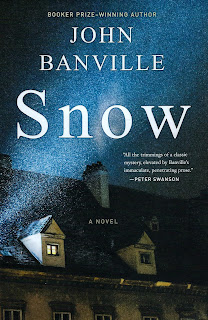Top Ten Tuesday is a weekly meme hosted by That Artsy Reader Girl. This week's topic is a Freebie (any topic). I missed last week's topic, which was New-to-Me Authors I Discovered in 2022. So that is what I am doing this week for my Freebie.
I was surprised to find that I read books by 43 new-to-me authors in 2022. I only read 88 books in 2022, and some were by the same authors, thus over half the authors I read were new-to-me.
Since I had so many to pick from, I decided to focus on authors who I want to read more books by OR I thought their writing was very special.
My list is in order by the date I read them.
Elizabeth Strout
I have only read one book by Elizabeth Strout, Olive Kitteridge, a book of linked short stories. Most of the short stories were depressing but I thought that the writing and the characters were excellent, and I want to read more books by her.
Richard Osman
Richard Osman is an English television presenter and novelist. His debut novel, The Thursday Murder Club, was published in 2020. I read all three books in that series in 2022, and loved them all. My favorite was The Man Who Died Twice.
Matt Haig
The Midnight Library was my first book by Matt Haig. I liked his writing, and I will read Haig's other books on my shelves (and my husband's).
Molly Clavering
Because of Sam by Molly Clavering is a lovely postwar story set in a village in Scotland, written in 1954. See Cath's review at Read-Warbler.
John Burdett
Bangkok 8 by John Burdett is the first book in a crime fiction series set in Thailand. The main character is a Thai policeman, Sonchai Jitpleecheep. I had had this book on my shelves for 15 years and now I hope to read more of them.
T. E. Kinsey
The Lady Hardcastle Mysteries are historical fiction, set in the early 1900's. Lady Hardcastle (Emily) and her maid Florence Armstrong solve mysteries while living in the English countryside. I was attracted by the idea of a lady and her maid solving mysteries, and I liked the first one so well I read two more. This is another series recommended by Cath at Read-Warbler.
Ted Wood
Dead in the Water by Ted Wood, published in 1983, is the first book in a ten book crime fiction series starring Reid Bennett. The book has a great Canadian setting, in a small town on the water, and one of the best characters is Bennett's dog Sam.
Stef Penney
I read The Tenderness of Wolves for my Canadian Reading Challenge. The story is set in 1867, primarily in a small settlement in the Northern Territory. This is a historical mystery, but the crime and the investigation are not the primary aspect of the story.
Elspeth Barker
This is the only author on this list that I will not be able to read further books by. Elspeth Barker's only novel was O Caledonia, published in 1991. This book is short, about 190 pages long, set in Scotland in the 1950s. It is a sad but beautiful story of a young girl, part of a large family, who doesn't fit in anywhere.
Mariah Fredericks
A Death of No Importance by Mariah Fredericks is a historical mystery set in 1910 New York. It is the story of a young woman who works as a lady's maid for the two daughters of a rich family and the first in a series of four books. I want to read more of that series and see where it takes the character.
Let me know if you have read any of these authors and have recommendations for further reading.


























